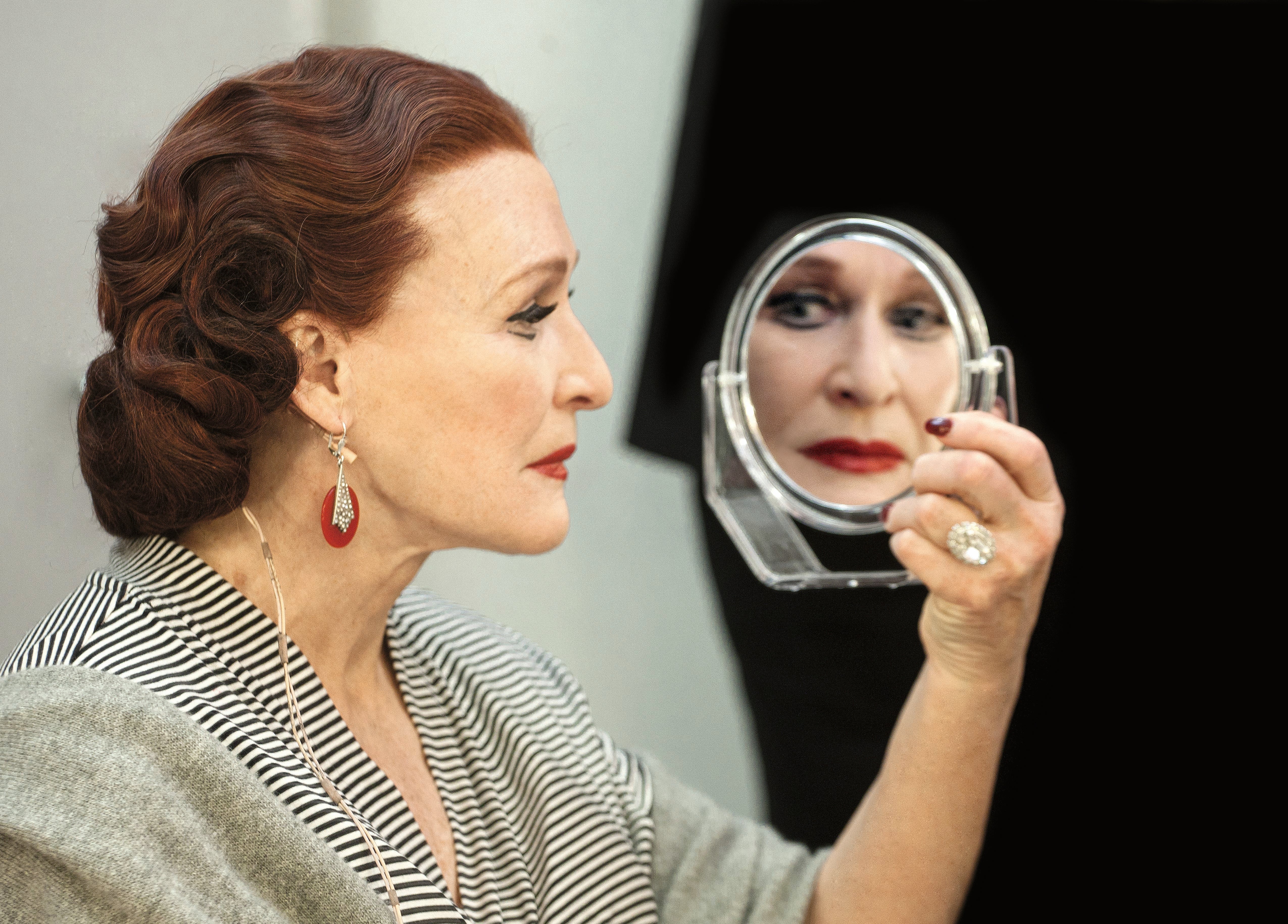Time to Act: Simon Annand’s backstage photos remind us of UK theatre’s vital magic
‘His sensitivity to atmosphere is, quite simply, astonishing,’ says Cate Blanchett, while the man himself tells Eve Watling: ‘It is the crossover of the two personas which fascinates me as a photographer’

Time to Act, a new photo book from Simon Annand, takes us backstage into the theatre’s private world. The book follows a 30-minute countdown until the first curtain call, intermingling many years and productions, and showing the timeless nature of theatre.
At half an hour to go, Judi Dench stares off into the distance, clutching a cup of tea; John Goodman contorts his face with warm-up exercises. At the 15-minute call, David Tennant, as Richard II, gazes into a mirror as a gold crown is placed on his head. At five minutes to go, the atmosphere has sharpened further – the actors’ eyes are glassy and inward-looking, points of focus amid the decrepit, colourful chaos of Britain’s tiny backstage areas. Lily James waits in the wings, tears already smudging her mascara; Helen Mirren is steely and serious as a purple-robed Phèdre.
Simon Annand began photographing actors in the 1980s at London’s Old Vic theatre. By now, he is a well-known presence backstage across the UK, gaining the trust of even the most private A-listers to catch them at an intimate and nerve-wracking moment of preparation. “He is inside this process with his subjects,” explains the actor Cate Blanchett in the book’s forward. “His sensitivity to atmosphere is, quite simply, astonishing. His decades-long examination of lives lived in the theatre is an invitation into very private worlds, at the second before they become public.”
“It is the crossover of the two personas which fascinates me as a photographer,” Annand tells The Independent. He is mesmerised watching one person emerge from the other as the curtain call draws closer. “The actor has to enable the removal of their own persona, to varying degrees, and instal the persona of a fictional character,” he says.
All the actors in the book, inevitably, photograph well. Some though, like Tilda Swinton in a powdered wig and white face paint in a 1989 production of Mozart and Salieri, look completely mesmerising, as though they have transfigured themselves for the part. Annand has a theory about what makes people photogenic – self-knowledge. “At one end, there are people who know exactly who they are and will dominate a room accordingly,” he says. “At the other end, there are people who have a large gap between who they think they are and who they really are. Most of us are in between.”
There are no tantrums or freak-outs recorded here – Annand says the list of nightmare actors runs to only half a dozen out of the thousands he has photographed. He sees this project as a collaboration rather than an intrusion: “The more well-known actors, those who are photographed frequently, welcome an equal exchange based on trust. I am on their side and the intention is to show the discipline of performing live eight times a week. Vulnerability, in this context, is a gift.”
He has seen the theatre world change over his four decades on the inside – the growth of the actor’s star power, the increasing allure of theatre’s handmade feel in the digital age, the introduction of microphones on stage: “The thrill of hearing an unmediated voice has been diminished by this development,” he says. The book was conceived before the biggest change of all – the devastation wreaked by the coronavirus and the subsequent shuttering of theatres across the country, which gives an extra poignancy to the images in Time to Act.
Some theatres took a share of the £257m government money pledged to arts organisations in October, although the blow of a second November lockdown has crushed the plans of many that were hoping to begin the slow path back to normalcy. At the end of October, the National Theatre cancelled most of its remaining performances of Death of England: Delroy. Many theatres have not yet reopened at all since the first lockdown. Performances often aren’t financially viable at the reduced capacity which would be necessary to comply with Covid guidelines.
Annand shares the frustration felt by many theatre lovers. “It is inexplicable how poorly the industry is being treated,” he says. “It seems so obvious that it is one of the greatest assets this country possesses and yet the government is allowing thousands of freelancers to be in a state of hardship and uncertainty. Most foreign visitors to the UK would mention the theatre, and the wider creative culture, as one of the main reasons to come here.”
Nonetheless, he remains hopeful. “The depth of creative culture in the UK is so profound there is no doubt in my mind it will reassert itself,” he says. “The buildings themselves will continue their journey at some point. London in particular has the long-proven ability to reinvent itself, when the conditions have been bleaker than this, for example in the Blitz.”
“The theatre will return.”
Time to Act is available now from Lannoo Publishers. A donation to the Theatre Artists Fund is made for every copy sold
Join our commenting forum
Join thought-provoking conversations, follow other Independent readers and see their replies
Comments
Bookmark popover
Removed from bookmarks